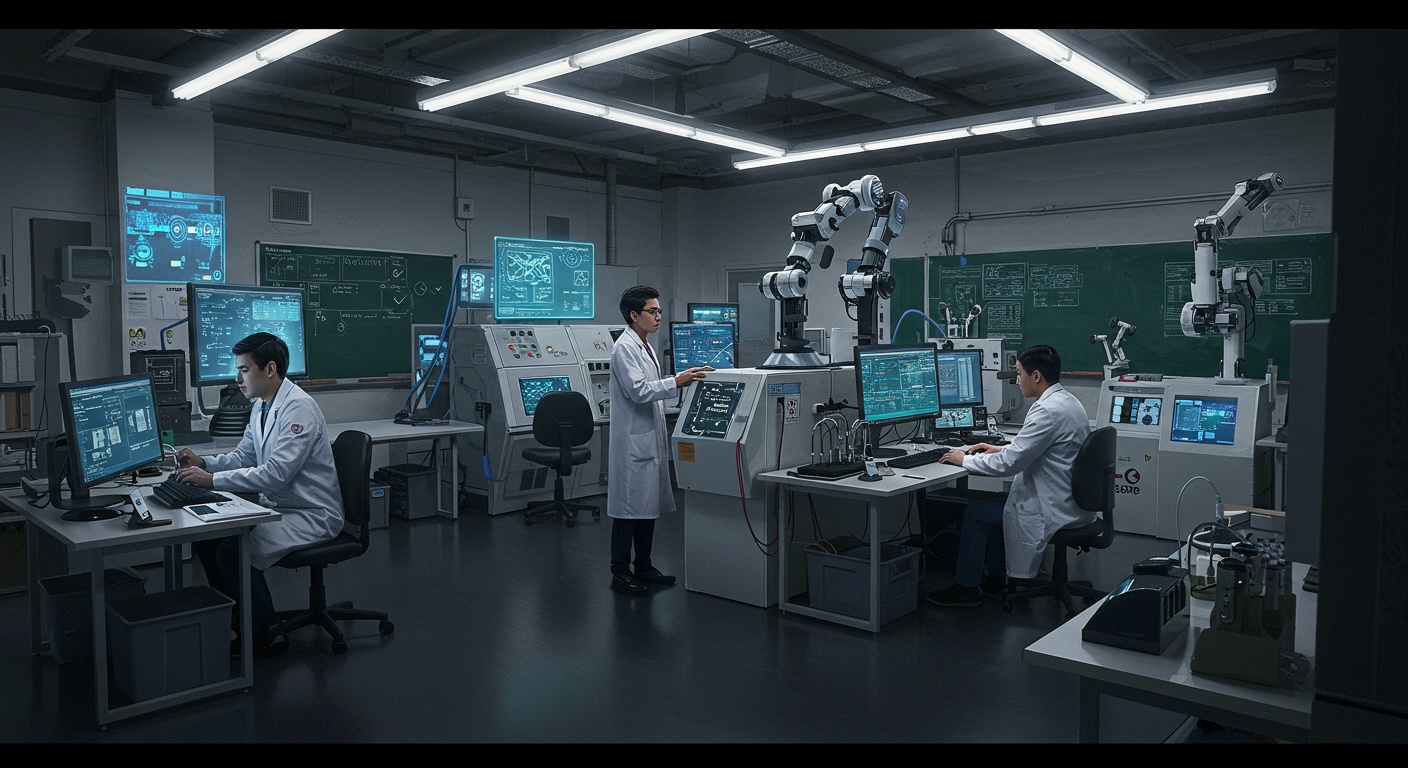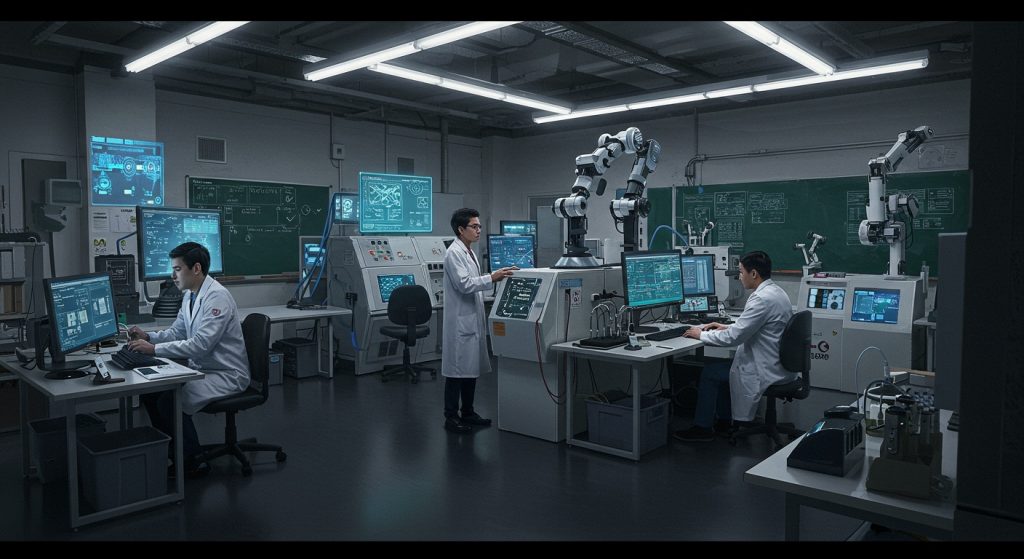Beyond ivy-covered walls, universities are now dynamic engines of global innovation. CRISPR technology, born from academic labs, now revolutionizes gene editing, while AI algorithms powering self-driving cars trace their lineage back to university research projects. Today, this impact is accelerating. Funding models increasingly prioritize translational research, pushing discoveries from bench to bedside faster than ever. University-led incubators are nurturing the next generation of startups, addressing challenges from climate change to personalized medicine. Exploring this vital intersection of academia and industry reveals how universities are not just shaping minds. Actively building the future.

From Research to Reality: The University Ecosystem
Universities are often seen as ivory towers. Increasingly, they are becoming vibrant hubs of innovation, driving technological advancements and shaping the future of various industries. This transformation stems from a growing emphasis on translating academic research into practical applications, fostering entrepreneurship. Collaborating with industry partners. The university ecosystem, therefore, encompasses not just academic departments and research labs. Also technology transfer offices, incubators, accelerators. Partnerships with businesses of all sizes.
Decoding Technology Transfer: Bridging the Gap
Technology transfer is a crucial process that facilitates the movement of intellectual property (IP) developed within universities to the commercial sector. This process typically involves the following steps:
- Invention Disclosure: Researchers report their discoveries to the university’s technology transfer office (TTO).
- Evaluation: The TTO assesses the commercial potential of the invention, considering factors like market size, patentability. Potential for licensing.
- Protection: If the invention has commercial value, the TTO seeks patent protection to secure exclusive rights.
- Marketing: The TTO markets the technology to potential licensees, such as established companies or startups.
- Licensing: A license agreement is negotiated between the university and the licensee, granting the licensee the right to use the technology in exchange for royalties or other compensation.
- Commercialization: The licensee develops and commercializes the technology, bringing it to market.
Without effective technology transfer, groundbreaking research might remain confined to academic publications, hindering its potential to benefit society.
University Incubators and Accelerators: Nurturing Startup Dreams
University incubators and accelerators play a vital role in supporting student and faculty entrepreneurs who want to transform their research into viable businesses. These programs provide a range of resources, including:
- Mentorship: Experienced entrepreneurs and industry experts provide guidance and advice to startups.
- Funding: Seed funding or access to venture capital networks helps startups secure the initial capital they need to get off the ground.
- Office Space: Affordable office space and access to shared equipment reduces overhead costs for early-stage startups.
- Training: Workshops and seminars cover topics such as business planning, marketing. Fundraising.
- Networking: Opportunities to connect with potential investors, customers. Partners.
These programs dramatically increase the odds of success for university spin-offs, fostering a culture of entrepreneurship and innovation.
Real-World Applications: Universities at the Forefront
Universities are at the forefront of groundbreaking research that has led to numerous real-world applications. Here are a few examples:
- Medicine: Universities are developing new diagnostic tools, therapies. Vaccines for a wide range of diseases. For example, mRNA vaccine technology, crucial in the fight against COVID-19, was developed with significant contributions from university research.
- Engineering: Universities are pioneering advancements in robotics, artificial intelligence. Materials science. Self-driving car technology, for instance, has its roots in university research labs.
- Energy: Universities are developing new renewable energy technologies, such as solar cells, wind turbines. Energy storage systems. These innovations are critical for addressing climate change.
- Agriculture: Universities are developing new crop varieties that are more resistant to pests, diseases. Climate change. This research is essential for ensuring food security.
These are just a few examples of the countless ways that university research is improving our lives.
Case Study: Stanford University and Silicon Valley
The relationship between Stanford University and Silicon Valley is a classic example of how a university can drive regional economic development through innovation. Stanford’s strong engineering programs, combined with its commitment to technology transfer and entrepreneurship, have played a pivotal role in the rise of Silicon Valley as a global hub for technology innovation. Many successful companies, such as Hewlett-Packard, Google. Yahoo! , were founded by Stanford graduates. This ecosystem thrives on the continuous cycle of research, innovation. Commercialization, attracting talent and investment from around the world.
The Role of Education and Finance in University Innovation
Education is the cornerstone of university innovation. A strong foundation in science, technology, engineering. Mathematics (STEM) is essential for producing the next generation of innovators. Universities also need to foster a culture of interdisciplinary collaboration, bringing together researchers from different fields to tackle complex challenges. Moreover, equipping students with entrepreneurial skills, such as business planning and marketing, is crucial for translating research into commercial ventures. Finance is also critical for supporting university innovation. Research funding from government agencies, private foundations. Industry partners is essential for funding basic and applied research. Universities also need to invest in infrastructure, such as state-of-the-art research facilities and technology transfer offices. Moreover, providing seed funding and support for university incubators and accelerators is crucial for nurturing startup companies. The convergence of education and strategic financial investments forms the backbone of a thriving innovation ecosystem within universities.
Comparing University Innovation Models
While all universities share the goal of translating research into real-world impact, different institutions may adopt different approaches to innovation. Here’s a comparison of a few common models:
| Model | Characteristics | Strengths | Weaknesses | Example |
|---|---|---|---|---|
| Entrepreneurial University | Emphasis on commercializing research, fostering startups. Generating revenue through licensing and spin-offs. | Strong economic impact, job creation. Technology transfer. | Potential for conflicts of interest, focus on short-term gains over long-term research. | MIT, Stanford University |
| Research-Intensive University | Focus on basic research and scientific discovery, with less emphasis on immediate commercialization. | Generates fundamental knowledge, trains future scientists. Contributes to societal progress. | Slower technology transfer, less direct economic impact. | University of California, Berkeley |
| Community-Engaged University | Focus on addressing local and regional needs through research and outreach. | Strong social impact, contributes to local economic development. Fosters community partnerships. | Limited resources, less emphasis on basic research. | Arizona State University |
Each model has its own strengths and weaknesses. The best approach will vary depending on the university’s mission, resources. Location.
Challenges and Opportunities
Despite the growing success of university innovation, there are still significant challenges to overcome:
- Funding gaps: Securing funding for early-stage research and startups can be difficult.
- Regulatory hurdles: Navigating complex regulations related to intellectual property and commercialization can be time-consuming and costly.
- Cultural barriers: Overcoming cultural differences between academia and industry can be challenging.
- Equity and inclusion: Ensuring that all students and faculty have equal access to innovation resources is essential.
But, there are also significant opportunities for universities to further enhance their innovation impact:
- Expanding partnerships: Collaborating with a wider range of industry partners, including small and medium-sized enterprises (SMEs).
- Developing new funding models: Exploring innovative funding mechanisms, such as crowdfunding and impact investing.
- Streamlining technology transfer processes: Making it easier for researchers to commercialize their inventions.
- Promoting interdisciplinary collaboration: Encouraging researchers from different fields to work together on complex challenges.
By addressing these challenges and seizing these opportunities, universities can continue to drive innovation and shape the future.
Conclusion
Universities are not ivory towers. Rather dynamic engines driving innovation and shaping our future. We’ve explored how these institutions are increasingly fostering collaboration between labs and the real world, pushing the boundaries of knowledge and creating tangible solutions to global challenges. Remember, this transition from research to application hinges on active participation. Seek out opportunities for internships and research projects that bridge the academic and commercial spheres. Personally, I’ve found attending university-hosted workshops on intellectual property and entrepreneurship invaluable. Don’t underestimate the power of networking; attending industry events and connecting with alumni can open doors you never imagined. The current trend of universities investing in startup incubators and technology transfer offices presents unprecedented opportunities for students and faculty to translate their ideas into viable businesses. As highlighted in articles about ethical funding, it is crucial to ensure that such progress is inclusive. Embrace the challenge, stay curious. Contribute to the ongoing evolution of universities as catalysts for a brighter tomorrow. University Lab Partners are a great example of this.
More Articles
Beyond Graduation: Exciting Career Paths with a Design Degree in the Future
Online Learning Revolution: The Future Of University Education Trends
Fair Admissions: Ethical Considerations In University Funding And Acceptance
Connect & Create: Networking Opportunities for Aspiring Design Students
FAQs
Okay, ‘Labs to Life: Universities Driving Innovation and Shaping the Future’ sounds vital. What exactly does it mean? What’s the big idea?
, it’s all about how universities are taking cutting-edge research from their labs and turning it into real-world solutions – things that impact our lives, our businesses. Our future. Think groundbreaking technologies, innovative products. Even new ways of thinking about old problems. They’re not just publishing papers, they’re creating the future!
So, how are universities actually doing this ‘driving innovation’ thing? It can’t just be magic, right?
No magic wands involved! It’s a multi-faceted approach. They’ve got researchers doing the discoveries, tech transfer offices that help commercialize those discoveries, incubator programs supporting student and faculty startups. Partnerships with industry to get the innovations out into the world. It’s a whole ecosystem designed to turn ideas into reality.
What kind of innovations are we talking about here? Give me some concrete examples!
That’s the exciting part! It’s super diverse. We’re talking everything from new medical treatments and diagnostic tools, to sustainable energy solutions, to advanced materials for construction and manufacturing, to AI and robotics breakthroughs. Really, any area where research can make a difference.
Why is it crucial for universities to focus on this ‘Labs to Life’ approach? What’s the benefit for us regular folks?
Good question! It’s vital because it accelerates progress. Without this push to translate research into practical applications, a lot of brilliant ideas might just stay locked away in academic journals. By actively driving innovation, universities are helping to create new jobs, improve our quality of life. Solve some of the world’s biggest challenges.
Are all universities equally good at this ‘Labs to Life’ stuff? Or are some better than others?
That’s a fair point. Like anything, some universities are definitely leading the charge. They often have strong research programs, dedicated funding for innovation initiatives. Well-established partnerships with industry. But even universities that are just starting out can make a significant impact with the right support and focus.
What can I do to support this kind of university innovation? Besides, you know, sending them money?
There are plenty of ways to contribute! You can support policies that encourage university research and development. You can invest in companies that are commercializing university technologies. You can even just spread the word about the amazing work being done at universities. Every little bit helps to foster a culture of innovation!
Okay, last question. What’s the future hold for ‘Labs to Life’? Where are we headed?
I think we’re going to see even more collaboration between universities, industry. Government to accelerate the pace of innovation. We’ll also likely see more focus on solving specific societal challenges, like climate change and healthcare disparities. The future is bright. Universities are going to be at the forefront of shaping it!



